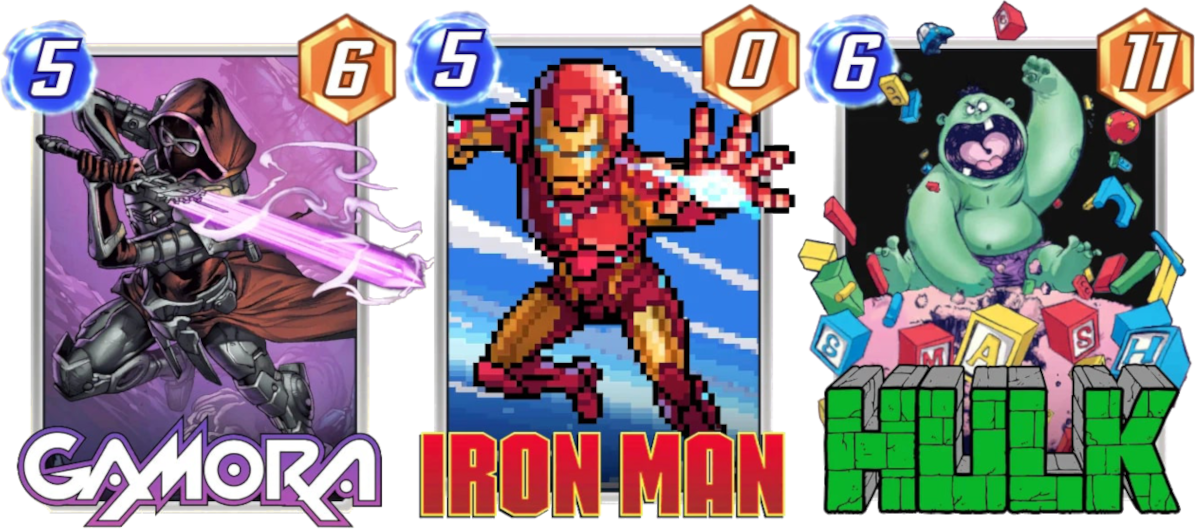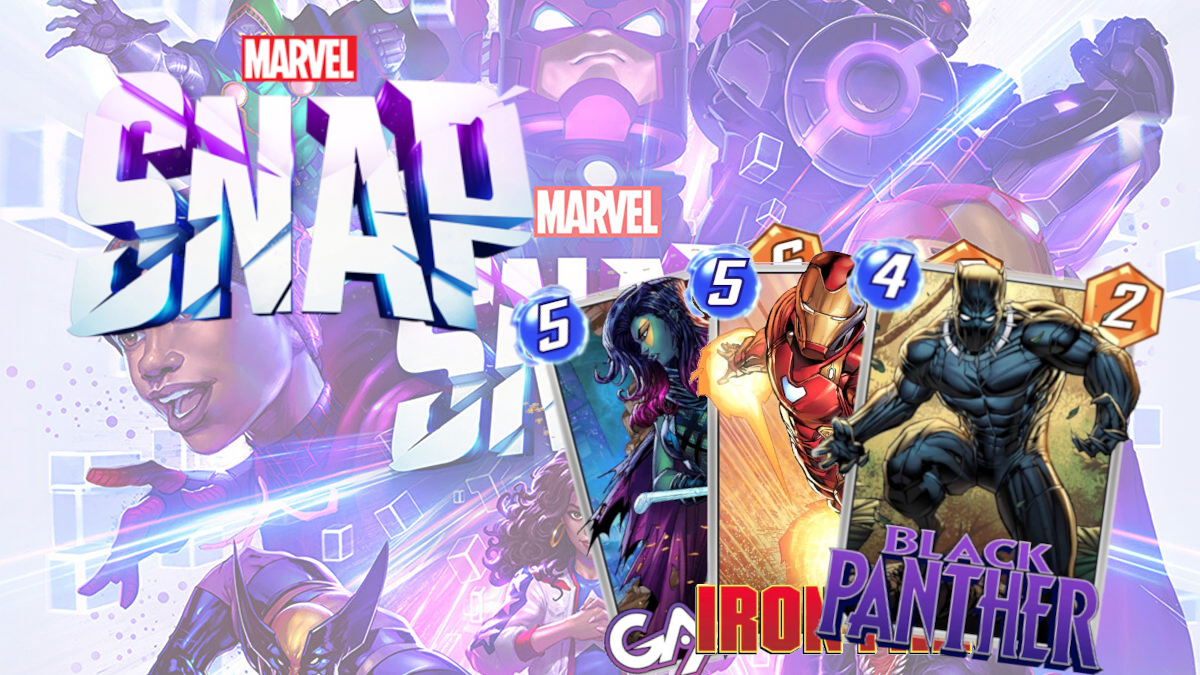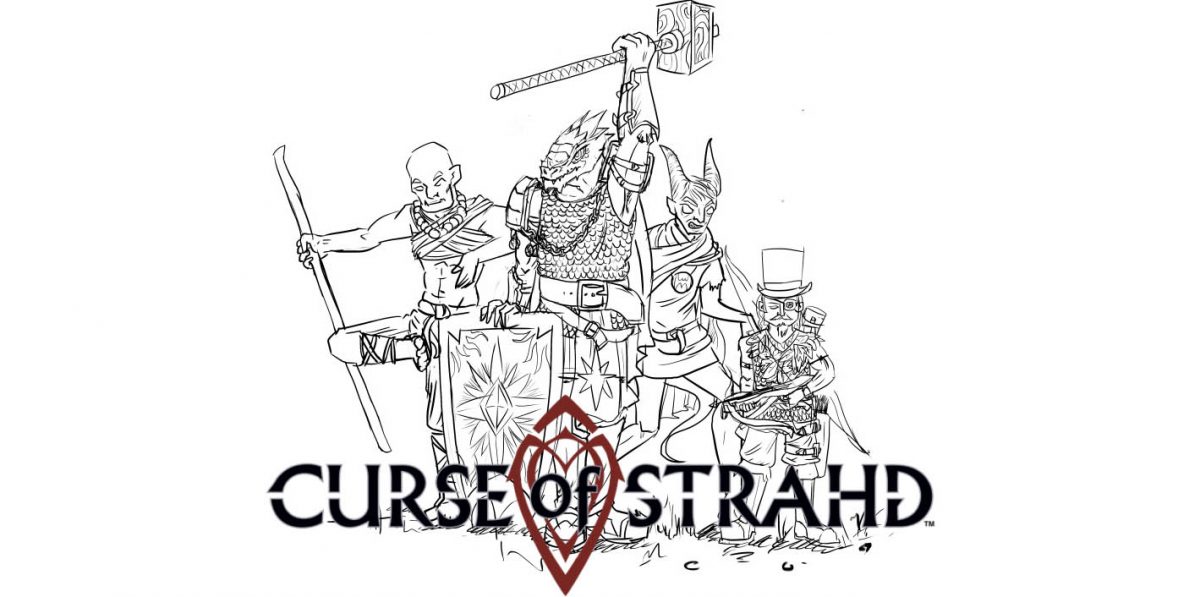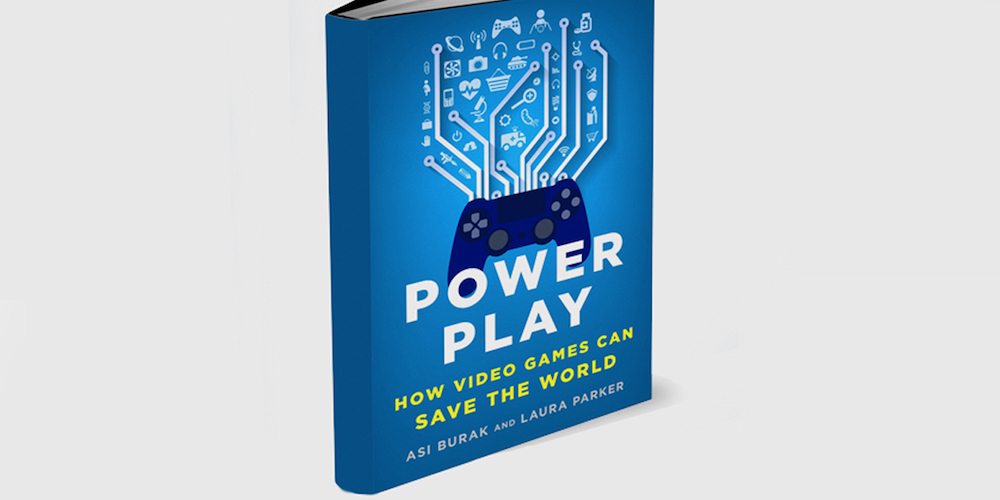I don’t play mobile games. Especially ones with in-app purchases. So how on Earth do I find myself consumed by Marvel Snap; a mobile game with in-app purchases?
What Is Marvel Snap?
Marvel Snap ticks all my geek boxes. It’s Marvel heroes pitched against one another in a deckbuilding game. I’ve written both about Marvel, in the form of Marvel: Crisis Protocol, and deckbuilders, in the form of my beloved Warhammer Underworlds, and I’ve even written about both of them combined, in the form of Marvel Champions. The Marvel Snap iteration might be my favorite of all of them. It’s so slick to play and tactically fascinating.
The game is a two-player PvP game, that you play remotely across the ether. Apart from your turns in the game, there is zero interaction with your opponent. I think there are standard emoticon-type messages you can send, but I never do and I almost never have them sent to me. At the time of writing, there is no way to add a friend list and play against people you know.
Marvel Snap is available on Itunes, Google Play and Steam.
With any mobile game of this nature there are two aspects to look at; the money-making angle and the actual gameplay. I’ll say upfront that you can have a good game without sinking any money into it. I had accumulated some Google Play credit, so I have put a little bit of money into the game. About 20 GBP ($1.50); a little UK economics joke for you, there. It’s roughly 20 USD worth.
As well as playing the game, there is a collectible aspect to Marvel Snap. You’ll be collecting (digital) cards. Each card has a hero on it. In-game heroes have different abilities and power scores; they also have varying energy costs to play. Like all collectible card games the more cards you have access to, the better the decks you can build. That said, I haven’t yet discovered an all-pervasive “meta” that heavy players of the game use to crush their opponents. If there is a “pay-to-win” element here, I am yet to see it.
How do you Play Marvel Snap?
Playing the game is simplicity itself.
During each game, you play cards across 3 locations, over 6 rounds. If you are winning at two locations when the game ends, you win. Each turn, you receive energy to spend on playing cards. In round 1, you are given 1 energy, round 2, you get 2, round 3, 3, and so on. Cards have a range of energy points from 1-6. You can spend the number of energy points corresponding to the turn number, using any combination of cards in your hand. In normal circumstances, therefore, you can only play your 6 energy cost cards in round 6. The higher the energy cost, the better the card.
Energy does not carry over to the next turn. Use it or lose it!
Each hero has a power value. The higher the power the stronger the card. You can play up to 4 cards at each location. The power total of cards at each location is cumulative. If your total power at a location is greater than your opponent’s, you’re winning that location. If you’re winning on turn 6, you’ve won that location. Win 2 out of the 3 and you’ve won the game!
Marvel Snap would be nowhere near as good if it wasn’t for the fact that most cards have abilities that can influence your other cards, such as making them move or boosting their power values. This means you have to think about where you place your cards in order to best utilize their abilities. Generally, speaking you’ll want to focus your efforts on two locations. Though sometimes you’ll find yourself having to change trajectory mid-game.
To add further frisson, the locations themselves have different powers, some strengthen your cards, and some weaken or destroy them. Others might give you random cards, or add monsters to the board. Whilst you can place cards at any of the three locations from the get-go, the locations’ powers are revealed over the first 3 turns. On the first turn, you’ll only know the power of the left-most location.
Why Is the Game Called Marvel Snap?
You may be wondering, at this point, why the game is called Marvel Snap. Obviously, there is the Thanos “snap” reference, but the Snap is also a feature of the game. Marvel Snap has a ranking ladder. Each time you win a game you win points that take you up the ladder. At the start of the game, the points available are set to 1. If you win at the end, this will double to 2 points. If you lose, you’ll lose two points. If either you or your opponent retreat before the end of the game, you’ll only win/lose 1 point. You can, however, double this by “snapping;” meaning you’ll win four points if you win at the end. Both players can snap once in a game, meaning the points up for grabs can be doubled twice, up to 8.
I must confess, I either forget to do it, or am rarely confident enough in my own abilities to snap that often, but if you can consistently do so (and win when you do), you’ll soar up the ranking ladder.

Avengers Assemble. The Collecting Side.
Each card exists in various different forms. This is where the collecting side comes in. Firstly, there are lots of “alt-art” versions of cards. They all behave functionally identically in-game and you can only ever include one variant in a deck, but you might want to collect different versions of the same card just for aesthetic reasons.
Not only does each hero have different art variants each card has iterations of “rarity.” This is a familiar concept in collectible card games; these are your digital equivalents of shiny cards and foils. Each card has a number of stages it can go through, with each stage given hyperbolic titles like “Legendary” and “Epic.” As well as titanic names, you’ll get a little art upgrade, such as a shiny frame, or the picture being changed to 3D. It’s all visually appealing but largely pointless.
For a harassed parent of three, who is just looking for a bit of downtime, these entirely cosmetic upgrades would be superfluous if they weren’t also tied into your “collection level.” Each time you upgrade the look of your card, your collection level goes up. As your collection level goes up, you unlock new cards, “boosters,” and “credits.”
Boosters are what you need to actually upgrade a card. The more hyperbolic your card name the more boosters you need to upgrade it to the next superlative. Generally speaking, the more cards you have, the more upgrades you can do, which in theory means you can travel further up that ladder, faster. Each card upgrade requires you to use boosters and credits. Credits are where the real-world money comes in.
Like most mobile apps, there are tiers of currency. Credits can be bought with gold (as well as earned in-game). Gold can be bought with real-life money (though you can earn some through playing the game too.) For the simplest transactions, you can convert cash directly into gold. Gold can then be spent either on buying credits, which are then used to upgrade cards, or you can use gold to buy new alternate art for cards you already own. So far, I have only spent money to buy credits, because although alt-art might be nice, I want to climb that ladder. I haven’t spent any real money on gold as yet.
There is another way in which you can give the good makers of Marvel Snap your children’s lunch money.
Season Passes.
Like a lot of games, Marvel Snap comes with season passes. So far, these have been about £9/$10 to buy. A season runs for a month and you can progress through it without buying the pass. If you don’t pay, a lot of the rewards remain locked and you don’t get access to the season cards, so far, Miles Morales and Black Panther. (The current season is set in Wakanda).
If you do unlock the season, you get access to the entire season’s ladder of rewards. This includes credits, gold, boosters, and alternate card art. As a friend of mine said, £9 doesn’t seem too bad until you then realize you’d be paying £108 ($120), a year just to play a mobile game. So far I’ve only used my Google Play credit. I’m not sure whether I would buy season passes after that. On the one hand, it would be totally out of character for me to do so, on the other, I have had hours of entertainment from this game so far, and I do believe in paying for what you use.
Note: As for a lot of these games, it is possible to make spend crazy amounts of money. You can drop $100 to get 8000 gold. Worth it? Most definitely not. Beware of leaving your account open if your kids play the game. Also, Marvel Snap is addictive. It’s thrilling to unlock new cards, so bear that in mind if you know you have issues with impulse control.
How Does Deckbuilding Work?
In Marvel Snap, for each game, you need a deck of exactly 12 cards. You build this deck from any of the cards you have available to you. The app allows you to store multiple decks, so you can tinker with things and save several different deck archetypes as you go. In the first instance, though, you’ll just be wanting to maximize your power output. No matter how many alt-art versions of a card you have you may only include the same hero once in each deck.
The key thing to think about when building a deck is distribution. Yes, the 6 energy cost cards are all great, but you’ll only have one chance to play them, so don’t choke your deck with them. At the start of each game, you’re given three cards, and then you’ll draw another. For your first turn, you’ll have four cards to choose from.
It’s a good idea to front-load your deck with 1 and 2-cost cards because you don’t want to be unable to play in these initial turns. Plus, they always have the chance of being played later in the game. There are cards, like Quicksilver that help you buck the odds. He’s a fairly weak card, but he ALWAYS comes out turn 1. If you include him in your deck, you’ll know you’ll have something to play. Equally, Domino always arrives turn 2, if you include her. Later in your journey, you’ll have access to America Chavez who always arrives on turn 6.
Most heroes have abilities and the quality of an ability always has a trade-off in with power output. 3 cost Ironheart, for example, has a power of 0, but she boosts 3 other cards you have in play by 2. If you also play 6-cost (8 power) Odin to the same location, he reactivates “On Reveal” effects, which means Ironheart will do her boosting again.
This example shows how you can start to create decks with cards that work together to build powerful combinations. A lot of the fun of Marvel Snap is working these out, and then watching them come to fruition in-game. “On Reveal” is a keyword that lots of cards share and so becomes one of the game’s deck archetypes. There are several different ways of constructing decks especially when you have a large card pool. Hopefully, I will write a second article, outlining some of the archetypes available.
One thing that might slightly disappoint Marvel fans is that there are no particular synergies between classic team-ups. During the Spider-season you couldn’t build an awesome Spider-People deck. In the current Wakanda season, there’s no burning reason to play all your Wakanda characters together.
Why Play Marvel Snap?
This game has hit an absolute sweet spot for me. It’s extremely quick to play and has some great opportunities for deckbuilding. By using only 12 cards, the deckbuilding process is never too onerous. You can readily create interesting combinations but the game doesn’t punish you, if you don’t have time to think too deeply about your decks before launching into a battle. The quick play time, also means you soon realize which cards aren’t working and it’s easy to make a change. The random nature of the differing location abilities also seems to prevent one style of play from becoming too pervasive.
In-game, there are some tricky choices to make. Ones that are quickly rewarded (or the opposite). This injects a little serotonin hit! The game is supremely addictive. A glorious win, makes you want to take the deck for a spin again. An ignoble defeat makes you want to try again to see if it was bad luck or whether you need to improve things. The regularity with which you (and your opponents) gain new cards means there is always something new to exploit/counter. I’ve lost far too many hours to “just one more game” in the last month or so that I have been playing.
It’s a small thing, but the look and feel of the game is great too. The artwork is excellent, the sound isn’t too intrusive and some of the more iconic characters have little quips they throw out when you play them. There are very few things more satisfying than when Tony Stark says “I am Iron Man” and doubles your power at a location! It all adds more reasons why you want to throw yourself back into the game.
For somebody who doesn’t like mobile games, I find myself wanting to play this mobile game an awful lot of the time. The 50-year-old in me is wondering whether this is a valuable use of my time, but the hero-obsessed kid in me doesn’t care one bit. “Hulk Smash!” I’ve had a great time playing Marvel Snap it will be interesting to see whether it can hold my interest, and how the game and gameplay will evolve in the coming months.




